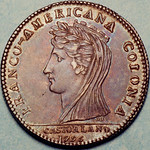
PREV ARTICLE
NEXT ARTICLE
FULL ISSUE
PREV FULL ISSUE
NOTES FROM E-SYLUM READERS: SEPTEMBER 13, 2015Macomb Medal Brings $238,000
The gold medal noted in your last issue sold yesterday for about 190,000+ swiss francs hammer (the bp is, I think 23.5%); so no sleeper there despite the 20-30,000 estimate! I worked it out at roughly $238,000 all in. 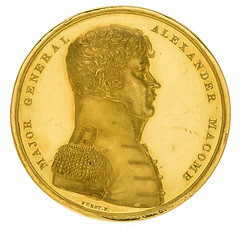
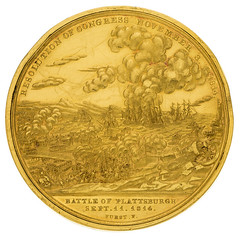
To read the earlier E-Sylum article, see:
Ernest, Lord Rutherford of Nelson
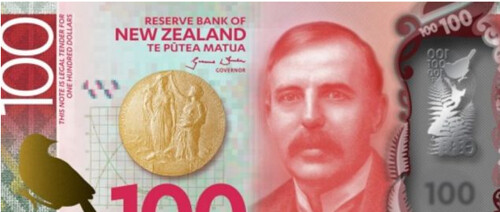
In response to my question last week about a New Zealand $100 banknote, George Cuhaj writes: The NZ 100 features Ernest, Lord Rutherford of Nelson, 1871-1937 The medal on the note is his 1908 Nobel Prize medal for chemistry; awarded to him for "his investigations into the disintegration of the elements, and the chemistry of radioactive substances" To read the earlier E-Sylum article, see:
More on Edward Hulseman
My late friend Bob Lindesmith published a detailed article titled “Edward Hulseman: Hard Times Token Engraver” in the TAMS Journal, vol. 7, pp. 71-82 (June-July 1967). (cited by Julia Casey in her article about Hulseman in the current issue of The Colonial Newsletter). Bob’s theory was that the Hard Times token dies signed with the letter H (specifically, the dies used on the reverse of Low 44, obverses of Low 51-52 and 171, reverses of Low 79, 83, 86, 94, 100 and 101, reverses of Low 75-76, and the “American Institute” reverse of Low 103-105) were cut by Hulseman; thus, that tokens struck from those dies and others mated with them were the work of Hulseman. He states that Hulseman is listed as a card engraver in the New York City directories from 1837 to 1841, and assumes that Hulseman had previously worked in Attleboro, MA. from 1833 to 1836. How did Bob connect Hulseman to the dies used on the foregoing group of tokens? He writes that his view is based on the statement of Charles I. Bushnell in An Arrangement of Tradesmen’s Cards, Political Tokens, Also, Election Medals, Medallets, &c. Current in the United States of America for the Last Sixty Years (1858), that the tokens of Robinson’s, Jones & Co. and its successor firm, R. and W. Robinson, of Attleboro, MA, both using the “American Institute” reverse, were “struck by Edward Hulseman.” Bushnell mistakenly lists these two tokens, which bear no location, in the New York City section (## 88 and 89). A third token using this reverse, that of and H. M. & E. I. Richards of Attleboro, is correctly listed by Bushnell (Attleboro#2), but he specifically ascribes only the first two tokens to Hulseman. Bob concludes his article with a promise of a future article on Hulseman, but I’m not aware that such an article ever reached print. We had some subsequent correspondence about die sinkers and engravers, but nothing further about Hulseman. Bob would have been surprised to learn of Hulseman later being accused of counterfeiting bank notes, I’m sure -- but the evidence is there, per Casey, although some of her newspaper clipping scans are barely legible. There are stylistic similarities between the 1847 Hawaiian cent obverse and some of the Hard Times token dies ascribed by Bob Lindesmith to Hulseman, such as the frontal couped bust portrait on Low 8-11 and 168, and the facing portrait on Low 51-52. But, accepting Lindesmith’s ascriptions as correct, how would Edward Hulseman, by then a fugitive from the law, have secured a royal commission from the respected King Kamehameha III to produce an official coinage for Hawaii? To me, that’s a looooong stretch. To read the earlier E-Sylum article, see:
More on the Castorland Pieces
Chester Sullivan writes:
Similar frustration was expressed by the Heritage Auctions cataloger who wrote, “In fact, most numismatic reference books of the past several decades are riddled with misinformation regarding these French-issued jetons.” [Description of Lot 28926, 2008 Long Beach Auction # 1100.] To the many people who’ve helped publicize the Castorlands census I say thanks, and I’m now making good progress collecting factual observations that in time might resolve some of those many errors. Concerning the brass specimen’s astronomical price, I can report the highest sale prices so far: an MS 62 from the Dominick Gaziano and Papyrus Way Collections [Stack’s Lot 14 3/26/08] sold for $16,100.00; an MS 64 ex Troy Wiseman [2007 (FUN) Heritage Signature Auction #422] also sold for $16,100.00; an ungraded example described as “finest we have ever seen” sold in1980 for $4,250.00. [Bowers and Ruddy auction, The Garrett Collection Sale 3, Oct. 1-2, 1980]. Nowadays it would fetch a price commensurate with the preceding two. Gerry Muhl’s detailed description of the Rochester Numismatic Association example certifies it to be a wonderful piece of extremely high-grade but its value will probably not be tested in the marketplace. It was donated to the RNA in 2006 by an anonymous person and is reported to have been in one family since being presented to them by Benjamin Duvivier (the engraver), to whom they are related. To read the earlier E-Sylum article, see:
Morgan Orr & Company
Check out the description of this painting. 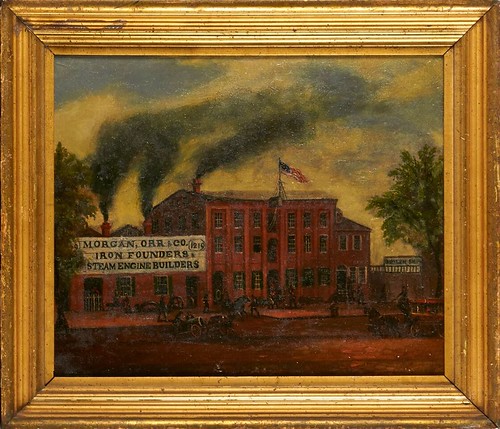
The Morgan Orr & Company was an iron foundry and steam engine building concern located at 1219 Callowhill Street in Philadelphia. The company was founded in the early 1850's by Joshua Morgan (b. 1820) and Arthur Orr (1819-1901) and quickly specialized in the production of coining machinery for the U.S. Mint. They produced coining presses, milling and other machines designed to work in precious metals. They provided machinery for the U.S. Mint in Philadelphia in 1858 and San Francisco (in use until 1955) and eventually supplied coining machinery to other countries including Peru, Bolivia and Mexico. This picture shows the company in 1865 at the height of its success with smoke bellowing from its furnaces and various activities in the courtyard before the complex. The 1867 Hexamer Insurance General Survey of the property below shows all of the buildings depicted here including the "Boiler Shop" and several more behind the group that faces Callowhill Street.
Thanks for sending this! I added the emphasis. We haven't had much more than passing references in The E-Sylum to Morgan Orr &
Company. Does anyone have (or know where to find) more information on them? -Editor
To read the complete article, see:
More Treasure Stories
It seems everyone is finding treasure these days.
Dick forwarded links to a handful of new stories in the news. Thanks. -Editor
To read the complete articles, see:
THE BOOK BAZARREWayne Homren, Editor The Numismatic Bibliomania Society is a non-profit organization promoting numismatic literature. See our web site at coinbooks.org. To submit items for publication in The E-Sylum, write to the Editor at this address: whomren@gmail.com To subscribe go to: https://my.binhost.com/lists/listinfo/esylum All Rights Reserved. NBS Home Page Contact the NBS webmaster 
|
